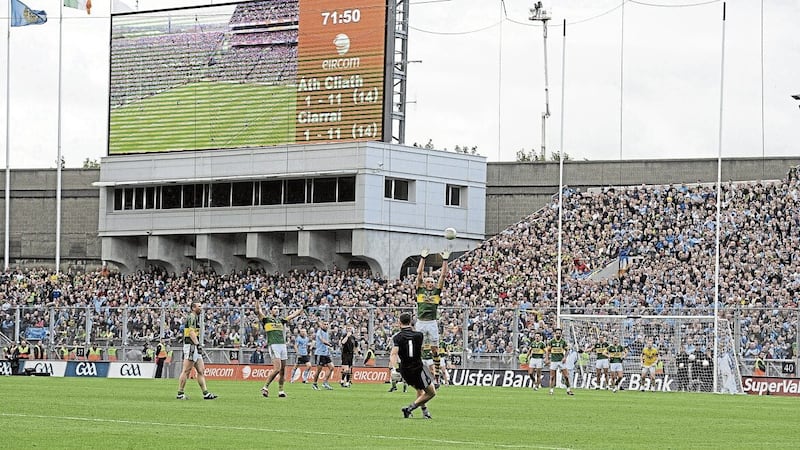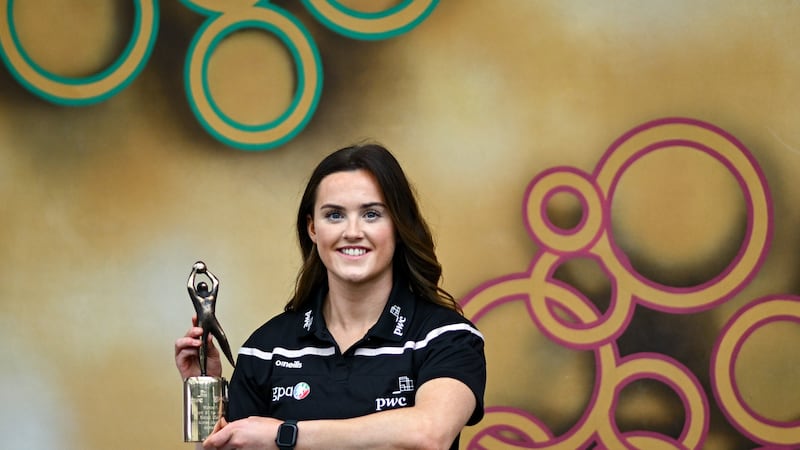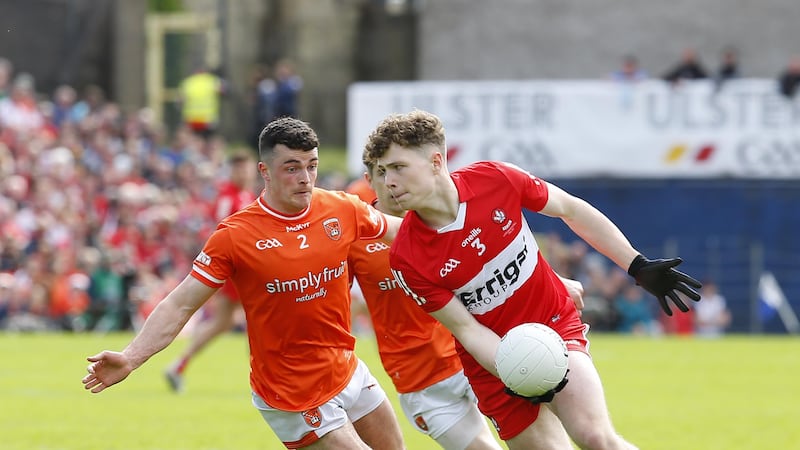TEAMS level, the clock testing time’s patience, but the free had been given and had to be taken.
Croke Park falls into something resembling stony silence. A yard stolen as if it’s a victimless crime, only for the Garda in black to threaten the full force of the law and a hop ball. Back you go, son.
Up it goes. Flying, flying, flying. Dropping, dropping. Over. The flag, the roars, up they go.
Except on this occasion, it’s the Kerry fans stunned into silence.
Niall Morgan was, what, 68 metres from goal?
There might have been better frees kicked in Croke Park (we’ll come to that in a minute), but there have been none bigger.
Right on the stroke of half-time in last year’s All-Ireland semi-final, the score Tyrone 1-6 Kerry 0-9, Morgan was no more than two metres inside the Kerry half. It looked an impossible task, but modern strength and conditioning practices have been redefining the art of the possible.
Was Morgan’s a better free than the one we saw from Sean O’Shea on Sunday afternoon? Or Rian O’Neill’s in very similar circumstances two weeks ago, salvaging extra-time in an equally frenzied finish between Armagh and Galway.
Everything is relative.
Tyrone weren’t winning or losing the game based on whether Morgan landed a free from halfway to Dundalk. There were another 35 minutes to come. Time made it the ultimate shot-to-nothing, taking on the long pot knowing you were safe either way.
That does change things enormously.
There’s also the aesthetic of the thing. Morgan was kicking the thing 68 metres to get it above the crossbar. You don’t have the luxury of a banana bend with that. If it gets there by any means at all, it’s a remarkable feat. But the straightness of it does take away.
Throw in the fact that only 40,000 people were allowed in due to Covid restrictions, there just wasn’t the same air swirling around Croke Park when the Tyrone goalkeeper landed his kick.
All of the above is to offer context to the debate that has grown since around half 5 on Sunday. Just what was the greatest free-kick ever scored in the big house?
In terms of sheer natural beauty, nothing comes close to Sean O’Shea’s. This was free-taking stripped of its make-up. The wind that had been taking shots wide of the far post at the Hill 16 end all day hasn’t slackened. The noise is turning to such a squeal soon only dogs will be able to hear it.
As it leaves his boot, 73,000 people suddenly fall deathly silent. It swings out right, and is still outside as it hurtles towards the 13’.
Dublin jaws start to open, ready to proclaim extra-time and the psychological hit they’ve just delivered to a Kerry team that just doesn’t know how to beat them.
Then it starts to swing in. Somehow, in those last few metres, it has caught all the whip he put into it. Drops right over the black spot, and you wonder how you’d ever thought for a millisecond that it was going wide.
Put it against Stephen Cluxton in 2011.
For distance, O’Shea wins comfortably. His had legs for another 10 metres at least.
For looks, it’s the Kenmare man too. The bend on it beats the arrow-straight Cluxton effort hands down.
But for significance, Dublin still edge it. Sam was won off it, and even though this 13-year monkey felt heavy on the green-and-gold backs, Cluxton wore 16 years on his and wasn’t blessed with glorious sunshine in which to throw it off.
Recency bias led social media to instantly proclaim O’Shea’s the greatest Croke Park free-kick of all time. The only contender in many eyes came from none other than his kicking coach, Maurice Fitzgerald, against the same opposition. Only problem was that his was in Thurles.
But just for the sake of it, was Maurice Fitz’s kick better anyway? He was generating the height and distance off the outside of the boot, measuring a wind going against a right-footer rather than one that, even swirling, was still in some part working for O’Shea.
It was two weeks to the day after Rian O’Neill produced an effort you thought wouldn’t be bettered for a long time.
O’Neill’s was a match-saver with no safety net of extra-time beneath. The distance was greater given the angle, and the couple of yards he’d nicked proved valuable to the head in believing the right leg could do it.
The angle suited the right-footer perfectly, far more so than it did O’Shea, but it was so far from goal that it’s hard to take anything away from the kick at all.
Go back through recent years and there are no shortage of big pressure kicks that have gone right, and plenty that went wrong.
Rob Hennelly’s dramatic retaken 45’ against Dublin last year, Dean Rock avoiding falling over Lee Keegan’s GPS unit, or go back to the cool-headedness of Mr Canavan being asked by the former student Mulligan “you or me?” before coolly ending the Tyrone-Armagh saga in 2003.
For each of those there have been Cillian O’Connor’s heartbreaking pull wide of the near post and kick on to the far stick, or Ray Cosgrove missing hitting the same spot with pretty much the first ball he’d failed to swing in in 2002, pushing Armagh closer to their first ever title.
The art is as precise as the debate is imprecise.
Many will put Sean O’Shea’s winner right to the head of the queue, but if Galway were to cause a surprise in two weeks’ time then does it fall back down? As with all things, context is everything.
No contest in Irish sporting history has offered greater context than Kerry v Dublin. No contest has offered such quality from the free-taking Gods.
Maurice Fitz. Stephen Cluxton. Sean O’Shea.
Take your pick.








